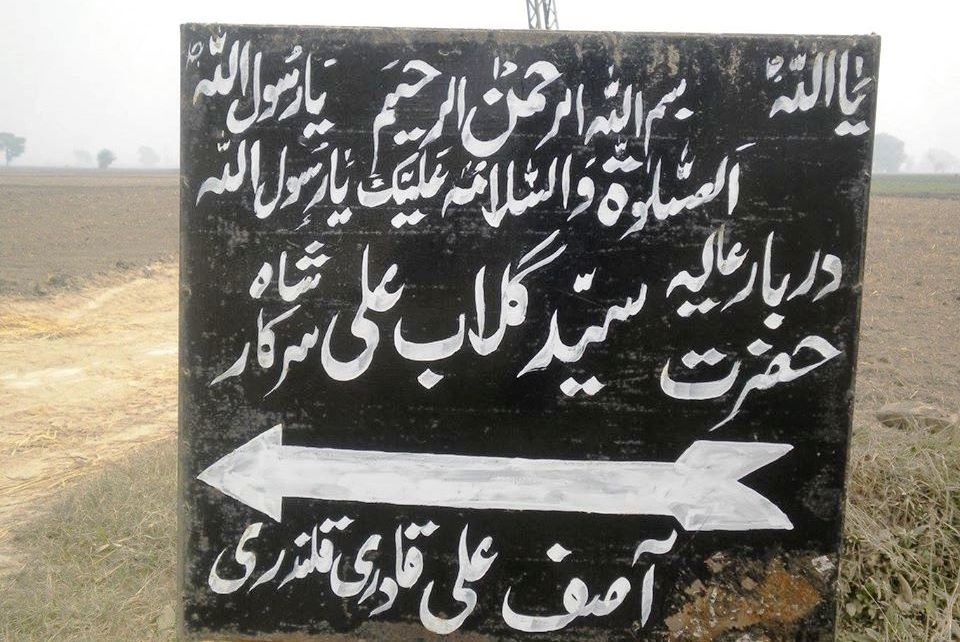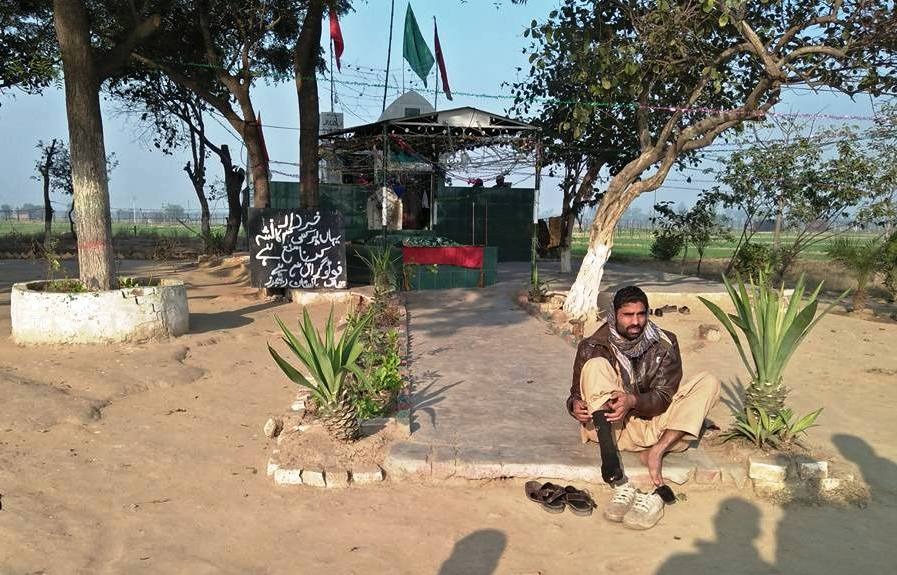

According to one visitor, the saint arrived in India more than 300 years ago. “He came to India to preach,” he said. In India, he said, a Hindu landlord gave the saint space to live. “That became his final resting place,” he added. His Hindu landlord, according to the devotees, embraced Islam and is also buried near the saint. According to residents, the shrine, equally divided between Pakistan and India at the time of partition, is now a victim of Indian Prime Minister Modi’s hate. Divided by the international border between the two countries and guarded heavily by security forces, access to the shrine is restricted on the Indian side. “Regardless of the tension between the two countries, devotees believe, the Indian government should allow unrestricted access to the shrine,” urged one visitor. While India prevents devotees from visiting the shrine, Pakistan allows visitors on its side.
The shrine is a popular site every Thursday when scores of devotees visit to offer their respect on the Pakistani side.
However, the Indian side remains deserted. Despite tensions, Pakistan, last year, opened its doors for the Sikh community to visit Gurdwara Darbar Sahib Kartarpur, one of the holiest places in Sikhism. Located around 4km from the border with India, the temple was inaccessible to Sikh pilgrims due to growing tensions between the two countries. For decades, Sikh pilgrims had to be content with viewing it through binoculars from India.

Pilgrims who wish to visit Sanjha Peer hope India would one day make it easy for them to visit the other side. “Pious people belong to everyone,” said one pilgrim who visits the shrine regularly. “India must lift the restrictions,” he added. Since taking the reins of power in India, Prime Minister Modi has made nationalism the cornerstone of his agenda. Aimed at pleasing his Hindu voter base, Modi’s policies, according to analysts, are mostly anti-Muslim.
Published in The Express Tribune, February 1st, 2020.




1736599343-0/fizza-(8)1736599343-0-165x106.webp)
1732012115-0/Untitled-design-(14)1732012115-0-270x192.webp)





1736508423-0/Express-Tribune---News-Desk-(9)1736508423-0-270x192.webp)


1736495887-0/sidra--(63)1736495887-0-270x192.webp)








COMMENTS
Comments are moderated and generally will be posted if they are on-topic and not abusive.
For more information, please see our Comments FAQ